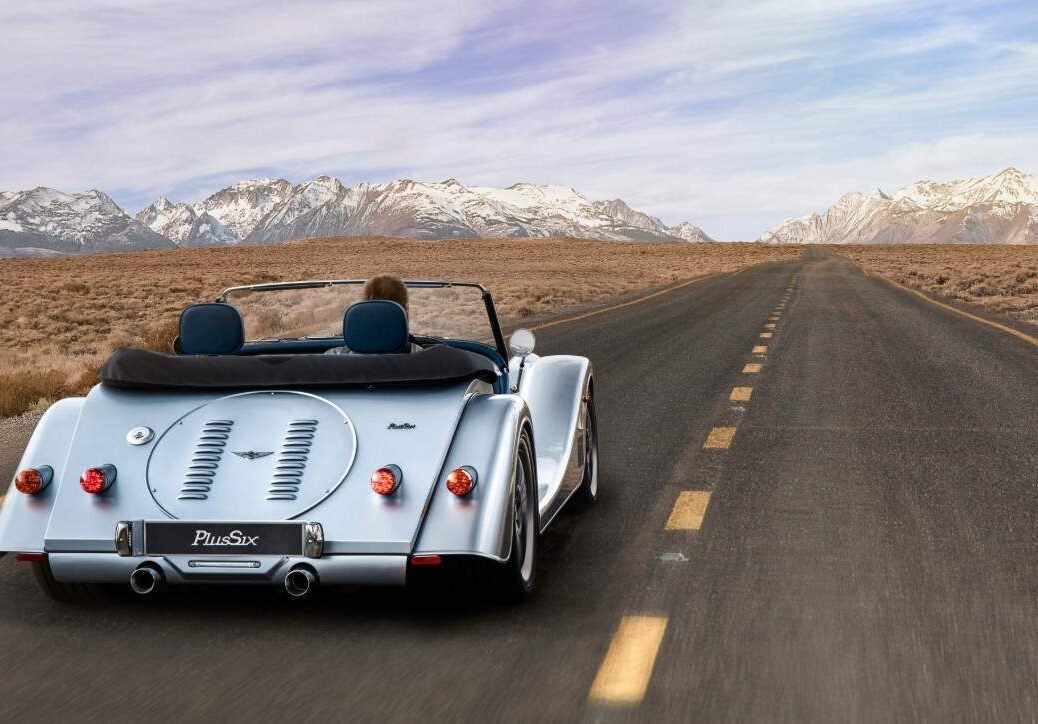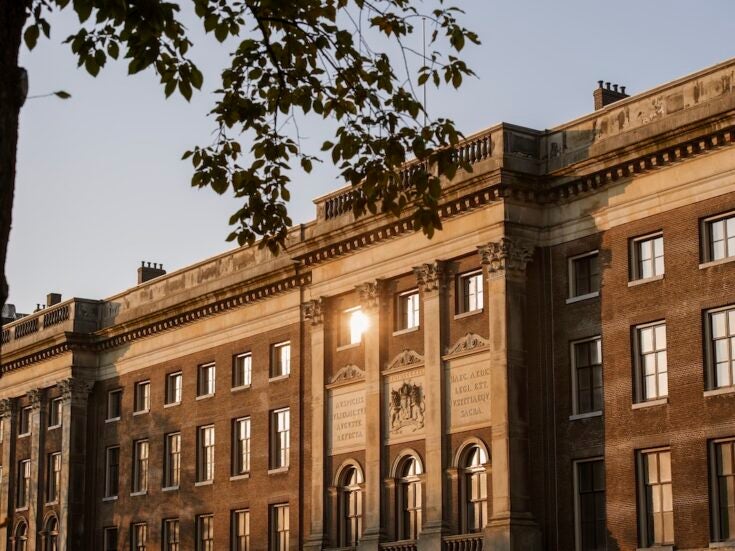
Morgan’s Plus Six may look like its 1930s ancestors – but this is a 21st-century beast, says Mark Walton
Driving the new Morgan Plus Six is a full sensory experience: engine noise whooshes and burbles in the air ow around the skinny windscreen; the cabin wafts with the heavy perfume of new leather; my hands jiggle as I hold the lively steering wheel; and ahead of me I see a long, louvred bonnet, pointing my way down this wriggling country road. If I were sucking a sherbet lolly right now, it would be complete sensory overload.
And do we have a sixth sense? Because I feel another impression, tingling in my skull: drifting along in the autumnal sunshine, I have a sense of well-being, a conviction that everything is right in the world. In the modern parlance of mindfulness, it’s impossible to drive the new Plus Six and not be ‘in the moment’.
You’ll be forgiven for thinking this new car looks like every other Morgan that’s gone before. Founded in 1909 by Henry Morgan, the company made motorcycle-engined three-wheelers in the Twenties and Thirties before launching the 4-4 in 1936, so called because it had four wheels and a four-cylinder engine. In 1950 a more powerful version was launched, called the Plus 4, which – once updated and restyled in 1954 – created the basic shape you see here, 65 years later.
Morgan hit the sweet spot with the Plus 4. It became the archetype of the classic, two-seater British sports car: long and low, rakish but reassuring, its sculpted, owing lines expressing speed like a Hawker Hurricane or the Mallard steam train.
In recent years, Morgan came to realise it needed to update its stalwart, and the new Plus Six is the result. So ignore the chrome door handles, the walnut dash and the tiny windscreen wipers – every component is brand new, making this car a much more radical step than its conservative appearance would suggest.
Under the skin you’ll find what Morgan calls its new ‘CX-Generation Platform’ – a fancy way of describing an aluminium tea tray, glued and riveted together with a wheel at each corner. In the front of this alloy box you’ll find the latest generation BMW six-cylinder turbo engine, which drives the rear wheels through an eight-speed BMW paddle shift gearbox. This ultra-modern drivetrain is another big step – the associated electronics alone have catapulted Morgan into the 21st century.
The car is clothed in a swooping aluminium body, and acting as the interface between the curvy panels and the boxy structure beneath is a handmade ash frame. Yes, that’s right – like the coachbuilders of the 19th century, the modern Morgan still has a skeleton of English ash, cut and shaped by master craftsmen. Walking into the ‘wood shop’ at the factory is like entering a furniture makers.
That alloy-and-ash construction means the Morgan is exceptionally light and strong, weighing just 1,075kg. Combine that with the BMW engine, tuned to Morgan’s own spec to produce 335bhp, and get ready for a big surprise when you drive it: it looks genteel, but the Plus Six has an indecent turn of speed.
Ground force
The cockpit follows the classic styling of the exterior: open the little door and slip yourself down – right down – to the stitched leather chair at carpet level. Legs outstretched, your open-top view looks up at pedestrians as they look down at you, like you’re reclining on a skateboard.
The seat is firm, but otherwise it’s a cosy cabin, the flat, matt- finish walnut dash punctuated by two big dials and a digital speedo ahead, through the steering wheel.
In no time at all, the new Morgan feels incredibly composed and well resolved, compared to its predecessors. The suspension soaks up bumps and potholes and the power-assisted steering is light and precise, allowing a stable and benign trajectory. Old-school Morgans needed a lot more wrestling. Drifting along, letting the unobtrusive automatic gearbox do all the work, it’s a relaxing car to drive. Long distances would be a doddle.
However, push the gear lever over to the left to manually change gear using the paddles, and press a button to engage ‘Sport Plus’ mode, and the Plus Six takes on a more rampant and red-blooded character. Suddenly there’s a real kick to the acceleration – the claimed 0-62mph time is just 4.2 seconds, which is supercar rapid. The straight-line acceleration is enough to have your head rocking back on your shoulders, but as the speed builds it starts to fidget on the road, requiring more and more concentration. Morgan claims a top speed of 166mph, but I sense the engine is more willing than the chassis is capable.
Such high-speed shenanigans don’t really matter, though. In the end I put it back into full auto, switched off Sport Plus and returned to a more relaxing pace. At these speeds, the Plus Six feels wonderfully sharp and responsive – it’ll overtake anything this side of a Ferrari – but it also feels usable and compliant. It’s the pace most owners will drive at.
Previous Morgans have been strictly weekend cars, the toy in the garage to take out for a jaunt on a Sunday afternoon. The new £77,995 Plus Six retains all the charm of that classic sports car of your dreams, but it’s now a car you could consider as your everyday choice, something to commute in if you could live with the fabric pram roof. Such a decision would give you, in mindfulness terms, what’s known as ‘complete mental wellbeing’. Also known as happiness.
Read more









